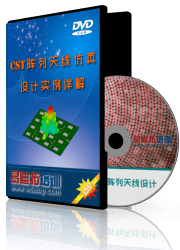- 易迪拓培训,专注于微波、射频、天线设计工程师的培养
SAR Calculation Problems
录入:edatop.com 点击:
I simulated a PIFA antenna in a tissue and obtain the following results but now,thess are my question :
- I'm not familar with IEEEC95.3 standar,dose my 1-g SAR result satisfy this standard?Which SAR calculations is important :Maximum SAR or average SAR?
================================================================================
SARCalculation Results
================================================================================
Powerlossdensity monitor used: loss (f=320) [1] at 320 MHz
StimulatedPower [W] (peak): 1
StimulatedPower [W] (rms): 0.5
Averagecell mass [g]: 0.000806696
Averagingmethod: IEEE C95.3
Averagingmass [g]: 1
--------------------------------------------------------------------------------
EntireVolume:
Min(x,y,z) [mm]: -50, -12, -50
Max(x,y,z) [mm]: 50, 38, 50
Volume[mm^3]: 500000
Absorbedpower (rms) [W]: 0.000171709
Tissuevolume [mm^3]: 492320
Tissuemass [kg]: 0.49232
Tissuepower (rms) [W]: 0.000171709
Averagepower (rms) [W/mm^3]: 3.48776e-010
TotalSAR (rms) [W/kg]: 0.000348776
Max.point SAR (rms) [W/kg]: 1.13978
Maximum SAR (rms,1g)[W/kg]: 0.0464041
Maximumat (x,y,z) [mm]: -3.75, 4.6,16.2013
Avg.vol.min(x,y,z) [mm]: -9.62584, -1.27584,10.3255
Avg.vol.max(x,y,z) [mm]: 2.12584, 10.4758,22.0771
Hi, 1g Average SAR is more important than unaveraged SAR.
1) Thermal effect is related to 1g average.
2) There is singularity from numerical simulation. So the peak SAR point is not necessarily worst heating location.
申明:网友回复良莠不齐,仅供参考。如需专业解答,请学习易迪拓培训专家讲授的CST视频培训教程。











